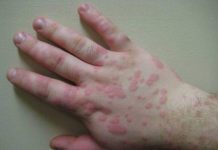Sepsis, also known as systemic inflammatory response syndrome (SIRS) is a serious medical condition that is due to the body’s response to an infection. This infection can originate in many body parts such as intestines, lungs, skin, and urinary tract that make toxins and cause immune system to attack the body’s own tissues and organs.
Sepsis can be a most frightening condition as it can lead to serious conditions that affect your lungs, kidneys, brain, and hearing, and sometimes even leads to death.
Signs and symptoms of sepsis can show up in people of all ages, but are most common in:
- Infants under 3 months, who have weak immune system and are unable to fight with these overwhelming infections
- People with chronic medical conditions
- People whose immune systems become weak due to conditions such as HIV
- Elder people
If the infant has rectal temperature of 100.4 degrees, seem irritable, lethargic, does not eat or has difficulty in breathing, or seems ill, then immediately call your doctor, as these can be the signs and symptoms of sepsis.
In older children, signs and symptoms of sepsis include fever, irritation, lethargy, confusion, rashes, trouble in breathing and illness.
Bacteria and toxins generated by sepsis can lead to changes in the person’s body temperature, blood pressure, heart rate and finally in the dysfunction of the body’s organs.
How to recognize if your newborn has sepsis?
Sepsis in newborns can lead to wide range of symptoms. These babies don’t look right to their caretakers. The most common signs and symptoms of sepsis in newborns and young infants include:
- Fever above 100.4 degrees
- Floppiness
- Lethargy
- Disinterest or difficulty in feeding
- Vomiting
- Rapid changes in heart rate
- Rapid breathing or difficulty in breathing
- Periods where the infant stops breathing for more than 10 seconds
- Rashes
- Changes in skin color
- Jaundice
- Reduced amount of urine
Bacteria are the leading causes of sepsis. Haemophilus influenzae type b, Neisseria meningitides, Group B streptococcus (GBS), Streptococcus pneumonia and Salmonella are the most common culprits of sepsis in newborns and infants younger than 3 months.
Sometimes, the bacteria that cause sepsis can enter in your baby’s body during pregnancy, at the time of labor or delivery. Most common pregnancy complications that can increase the risk of sepsis in a newborn baby include:
- Infection of placenta or uterus
- Maternal fever at the time of labor
- Premature rupture of the amniotic sac i.e. before 37 weeks of gestation
- Rupturing of the amniotic sac very early in the labor i.e. 18 hours or more before the delivery
Blood and urine test can be performed to check the existence of bacteria. Sometimes cerebrospinal fluid is also tested and cultured to find out whether the baby has meningitis. Chest X-ray can also be taken for the presence of pneumonia.
How to prevent sepsis?
Transmission of GBS bacteria from mother to child at the time of birth can cause sepsis. So, you should undergo simple swab test to determine the presence of GBS bacteria. If the test is positive, you will receive intravenous antibiotics at the time of labor and 4 hours before labor.
Infants receiving immunization can fight against strains of Haemophilus influenzae type b and pneumococcus that cause sepsis.
Hand washing is very important for people who come near the infant and they should receive complete immunizations.












